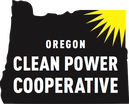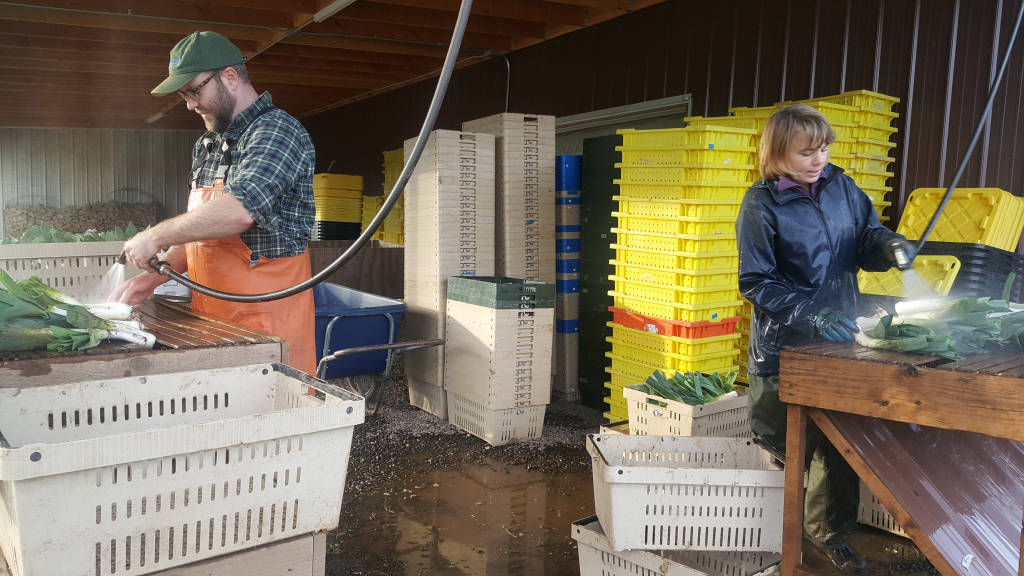
Nowadays, our insatiable appetite for fossil fuels emits far more waste (in the form of greenhouse gases) than our planet can safely absorb. The result is unprecedented changes in our climate at speeds no living creature can keep up with. Any farmer will tell you that the weather and climate are changing and we farmers are struggling to adapt fast enough. Between September 2020 and the June 2021 alone, our farm experienced crop losses of over $100,000 caused directly by climate-related weather events. The very basis of our food supply is under threat but adapt we must...
In response to all of this, Our Table's farm made a strategic decision in 2021 to focus all our efforts on adapting to the changing climate. We initiated a wholesale shift to no-till agricultural methods* which have, so far at least, been a great success. This combination of no-till and organic methods have greatly improved our soil health and soil health is important for many reasons not the least of which is that every 1% increase in soil organic matter (i.e. the quantity of living things in the soil) doubles the soil's water holding capacity. As climate change results in longer, drier, and hotter summers in our region, the ability to store more of our abundant winter rain in the soil is absolutely critical. However, it is not sufficient. Despite plenty of irrigation, we have found that many of our most valuable vegetable crops are increasingly suffering from lowered yields due to our hotter summers. One obvious solution is to give these crops some shade. Problem is, many of them need all the sunlight they can get during the spring and fall but suffer from the excess of sunlight and heat in the summer. In fact, in the summer time, these crops can only photosynthesize a fraction of the sunlight they get and all the excess sunlight just causes heat stress requiring a lot more irrigation and use of precious water. One solution to all of this is AGRIVOLTAICS.
Agrivoltaics - the word is a concatenation of "agri-culture" and "photo-voltaics" - is a relatively new invention. The idea is to create partial shade in farm fields with solar panels which can harvest the "excess" sunlight and turn it into electricity! The trick of course, is to find the optimal balance of sunlight that allows us to maximize the yield of both crops and electrical energy. This balance varies throughout the year (and in fact from day to day) and is highly dependent on a variety of factors including the particular crop being grown, temperature, humidity, soil quality, etc. Yes, it's all very experimental, but the early results are very promising and we are very lucky that our very own Oregon State University (OSU) is a leading institution in the field!
In late 2023, we partnered with Prof. Chad Higgens at OSU as well the Oregon Clean Power Cooperative to submit a grant proposal to Portland General Electric's Renewable Development Fund (RDF). A few weeks ago, we were informed that our proposal was selected to receive a Renewable Development Fund (RDF) award from PGE**!
The project will consist of 75kW of solar panels mounted on a dual-axis tracking system developed and manufactured by an the Oregon company - Stracker Solar - which will allow us to continuously adjust this delicate balance between optimizing for crop needs and energy generation needs. This 75kW of energy generating capacity will compliment the existing 30kW of solar panels we already have on our farm to meet 100% of the farm's electricity usage***. In addition, a battery backup system will allow us to keep our food stored safely (and our farm store open) during power outages while also helping to balance the electrical grid with stored energy. We hope to complete construction of this project by the end of 2024 after which the real work will start. In partnership with OSU, we will use this system to advance research in the field of agrivoltaics in a commercial farm setting. The hope is that we will be able to cover all our electricity needs, increase the yield of valuable summer crops, reduce the use of irrigation water, and make our farm (and by extension our community) more resilient to the changing climate. A win, win, win, win!
* A little background on no-till farming: Organic agriculture can be thought of as an attempt to minimize the disturbance & damage to soil ecology caused by artificial chemicals. However, as history has so often demonstrated, Organic agriculture is not necessarily sustainable in the long term - many ancient human civilizations collapsed due to loss of soil via erosion and mismanagement. The next logical step therefore, is to minimize the damage to soil ecology from mechanical disturbance. The combination - minimal disturbance of the soil and no artificial chemicals are sort of like the holy grail of a truly regenerative agriculture.
** A huge thank you to PGE and Green Future customers for supporting organizations like ours in our journey towards a cleaner, greener future! Since 1999, over 225,000 customers of Portland General Electric have supported clean energy by participating in the Green Future℠ renewable power program.
*** Why do farms use so much electricity? Well, the primary use of electricity on our farm is cold storage (refrigeration). We have a number of large walk-in coolers and freezers that need a lot of power. Additionally, our farm market has a large number of display coolers and freezers which also need constant power. In the summer months, our irrigation pumps suck up a whole lot of water from our pond and distribute it all over the farm which takes a lot of electricity. Heating and cooling of buildings are also energy-intensive uses. In the future, we would love to transition over to electric delivery vehicles and this project will generate enough energy for us to do so! Yes, it's a lot of energy but we are generating it ourselves on our farm using contemporary sunlight versus drawing down the planet's bank of ancient stored sunlight in the form of fossil fuels!













 RSS Feed
RSS Feed